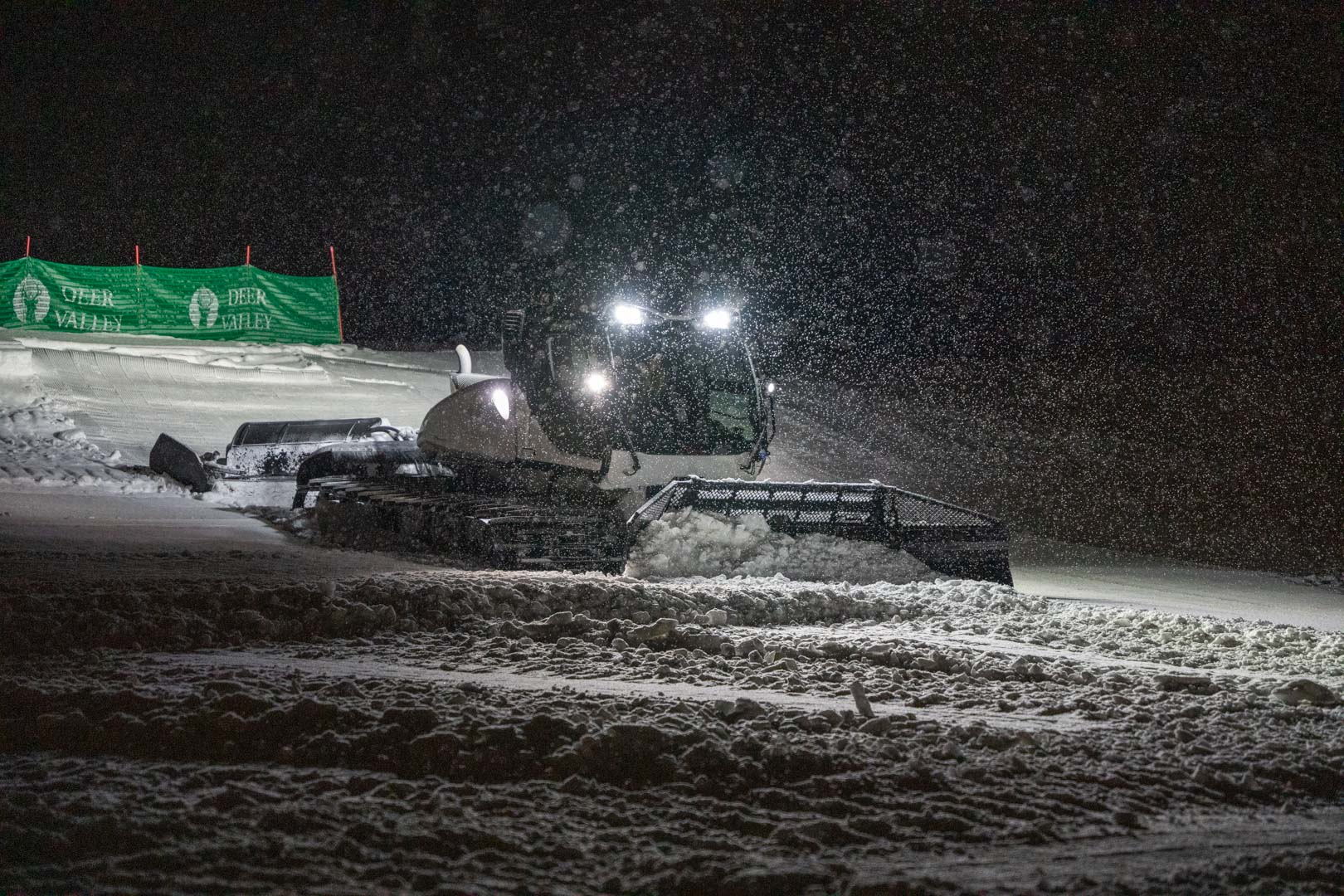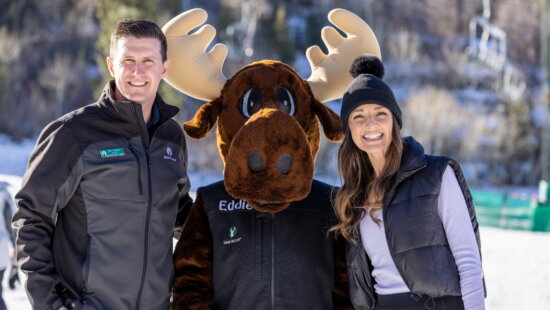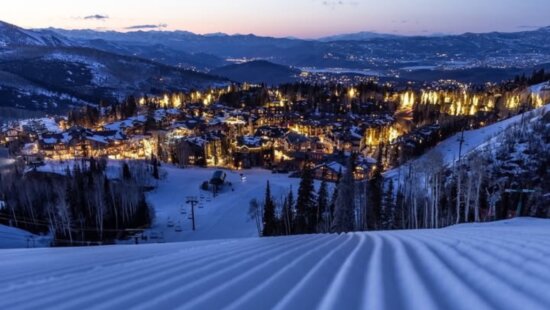Sports
A day in the life of a Deer Valley groomer

Snowcat working on Wide West at Deer Valley Resort. Photo: TownLift // Kevin Cody.
PARK CITY, Utah — Deer Valley Resort has been at the top or near it in virtually every ranking related to ski run grooming for several years. For many, it is now an expectation and the resorts calling card. Still, it’s also one that requires a lot of effort and investment by a dedicated crew that has made Deer Valley Resort synonymous with any mention of groomed runs.
Grooming a ski run is an art and a gradual process that takes time. Snow naturally gets pushed down a ski run simply by skiers using it. In many cases, that is where groomers start, pushing snow back up the run. An experienced groomer understands that a certain amount of the grooming is accomplished simply by snow settling, making each decision one of feeling and experience rather than a black-and-white choice. This is where the Deer Valley operators shine, as their efforts and understanding turn a ski run into a perfectly groomed run made to be carved on.

Regardless of timing, groomers usually operate solo and in the dark with only their spotlight and bright LED lights showing the way. For veterans such as shift lead Samantha VanAtta, that is one of the major pluses of the job. There is a peacefulness to being on the mountain at night, which gets even better when it is snowing, adding to the holiday-like feeling. For many, these are the key aspects that keep them coming back year after year.
Grooming an area can take on the form of a puzzle or a game of strategy. Each run has to be reworked in a way that considers the difficulty level that needs to be achieved. To do that, groomers use a front plow with maneuverable panels on either side that can be angled in different ways and a tiller on the rear used to smooth out the snow. A snowcat’s tracks are just as essential of a tool as they can break up the hard snow making it easier to move around. Some runs require the use of winch cables attached to concrete anchors sunk deep into the ground. The steepness of a slope is not the sole reason for a winch cable being needed, with snow density, ice, and the goal of the task being completed also being factors.

Wide West, the beginner skier area, is a prime example, as it takes input from multiple departments to make decisions that are fine-tuned in an ever-evolving area of the resort. Throughout the year, snow levels and conditions will dictate how the area will need to be shaped while maintaining the targeted skill level for each area. In the conveyer area, the slope to get onto each “magic carpet” is just as important as the exit, as it’s not ideal when each reindeer, a five or 6-year-old in ski school, needs to be pushed up a slope to avoid a traffic jam. The runs also need to be shaped to help keep novice skiers from sliding away from the area where they are learning to gain control of their skis.
Deer Valley operates a fleet of 16 snowcats that the 46 operators on the team use. Those operators are broken into two shifts, one heading out at around 4:30 p.m. after ski patrol ensures the mountain is clear of skiers and the other at midnight. Their shifts start with a meeting where the shift leads talk about work that needs to be done and give out assignments. Much of the targeted grooming efforts come from staff skiing around the resort. Other departments also work with the grooming team with tasks such as maneuvering snow created by snowmakers.

Snowcats operate under a regular schedule in which, every 2,000 hours, they are put in for service at the on-site facility. Reminiscent of aircraft about to be flown, each operator gives their cat a thorough walk around, checking for things like hydraulic fluid levels and if there is a leak. From there, the front plow and tiller in the rear are checked to ensure they are all in working order. Anything that needs to be addressed is then added to the log for that snowcat. All this is done while the snowcat’s diesel engines are warming up. Should a malfunction happen while in use, each operator carries a tool kit should a situation arise.
There is a lifespan for a snowcat in which they are used for grooming and then replaced, with many older cats being reassigned to other areas of the resort, such as the one being used on the construction of the Burns Express Lift. Simply looking at a snowcat, it would be hard to determine the age as they are all well kept, but with each newer model comes added technology. Some of the newer models have a snow depth sensor helping the operator to know how much snow can be maneuvered without reaching the ground.
























